Fees and Expenses: Do They Really Matter?
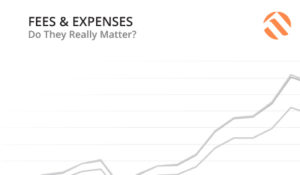
Fees Eat Up Return
Fees and expenses are two of the most important factors to consider when investing. You can’t control the direction of the financial markets, but you can control what you pay to invest.
Every mutual fund or exchange traded fund (ETF) in your portfolio has what’s called an “internal expense ratio.” This is the amount charged by the fund company for managing the fund.
The internal expense ratios for different funds, even funds with similar investment objectives, can vary widely. Those differences can make a big difference in the performance of your portfolio over time.
Investment costs might not seem like a big deal, but they add up and compound over time along with your investment returns. You don’t just lose the amount you pay in fees—you also lose all the growth that money would have generated for years into the future.
Here’s an example. Dozens of funds in the Morningstar database track the S&P 500 index. Many have internal expense ratios of .05% or less, while others have internal expense ratios of 1.00% or more. That’s quite a big range for funds that track the same index.
The chart below shows the growth of $1 million invested in the S&P 500 index over the 25 years ending in 2018. It also shows the return you would have received if you had invested $1 million in an S&P index fund with a .05% expense ratio vs. a fund with a 1.00% expense ratio.
Growth of $1M
25 Years
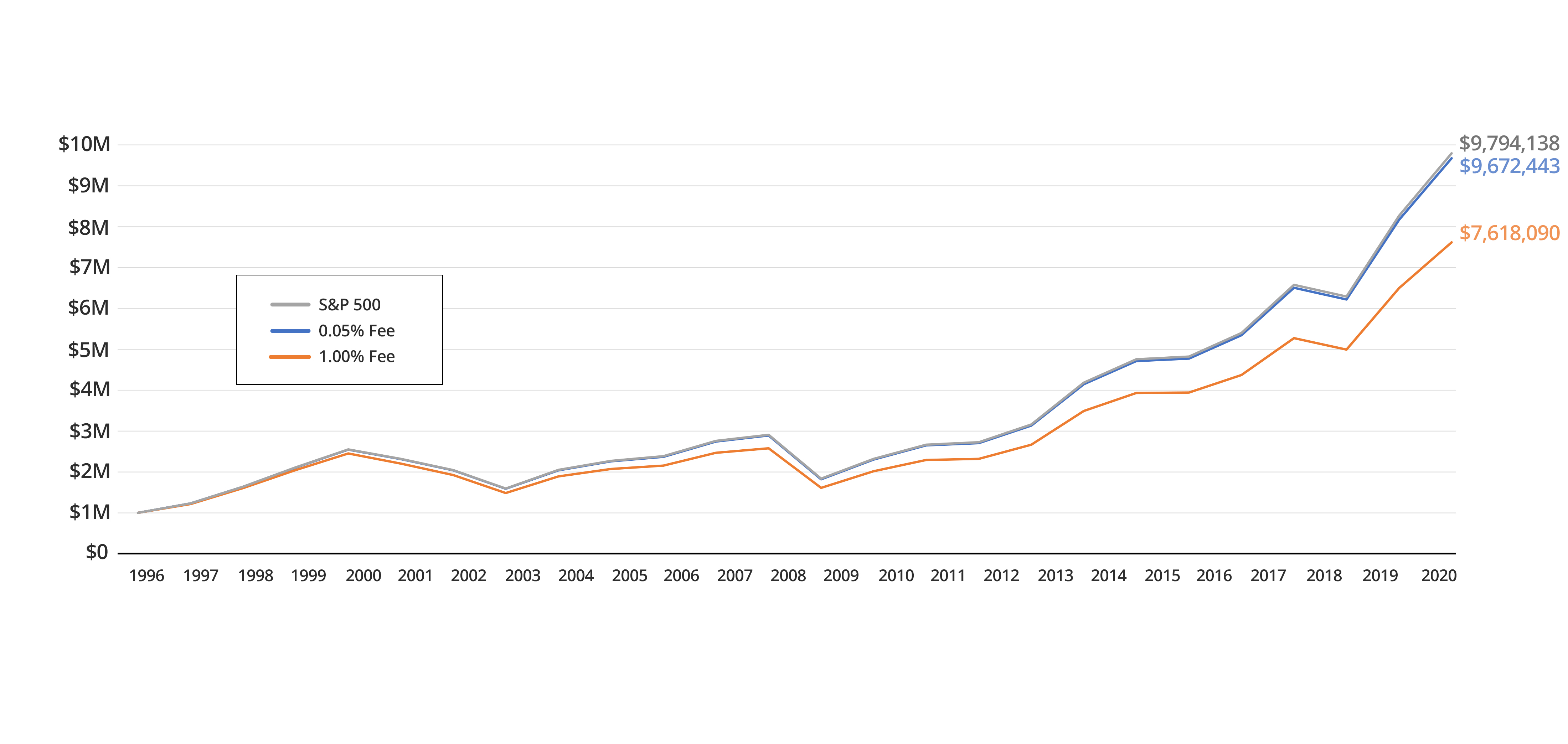
Source: Morningstar and First Ascent Asset Management
The difference between investing in the low expense ratio fund vs. the high expense ratio fund— $2,054,353—comes out of your pocket. This amount could fund years of retirement!
Paying attention to fund expenses can make a huge difference in your financial well-being.
Low Fees Are Correlated with Better Performance
Mutual fund and ETF expense ratios can have a significant impact on the performance of an investor’s portfolio. They are also a strong predictor of future fund performance.
Many studies have shown that funds with low expense ratios have a performance edge over funds with higher expense ratios. A 2010 study conducted by Morningstar tracked the performance of funds in different asset classes over various time periods. In every asset class over every time period, the low expense funds outperformed the high expense funds.
Vanguard did a similar study using data through 2016 and came to the same conclusion—lower expenses and higher performance go together. The results of that study are shown below.
Average Annual Returns
Ten Years Ending in 2016
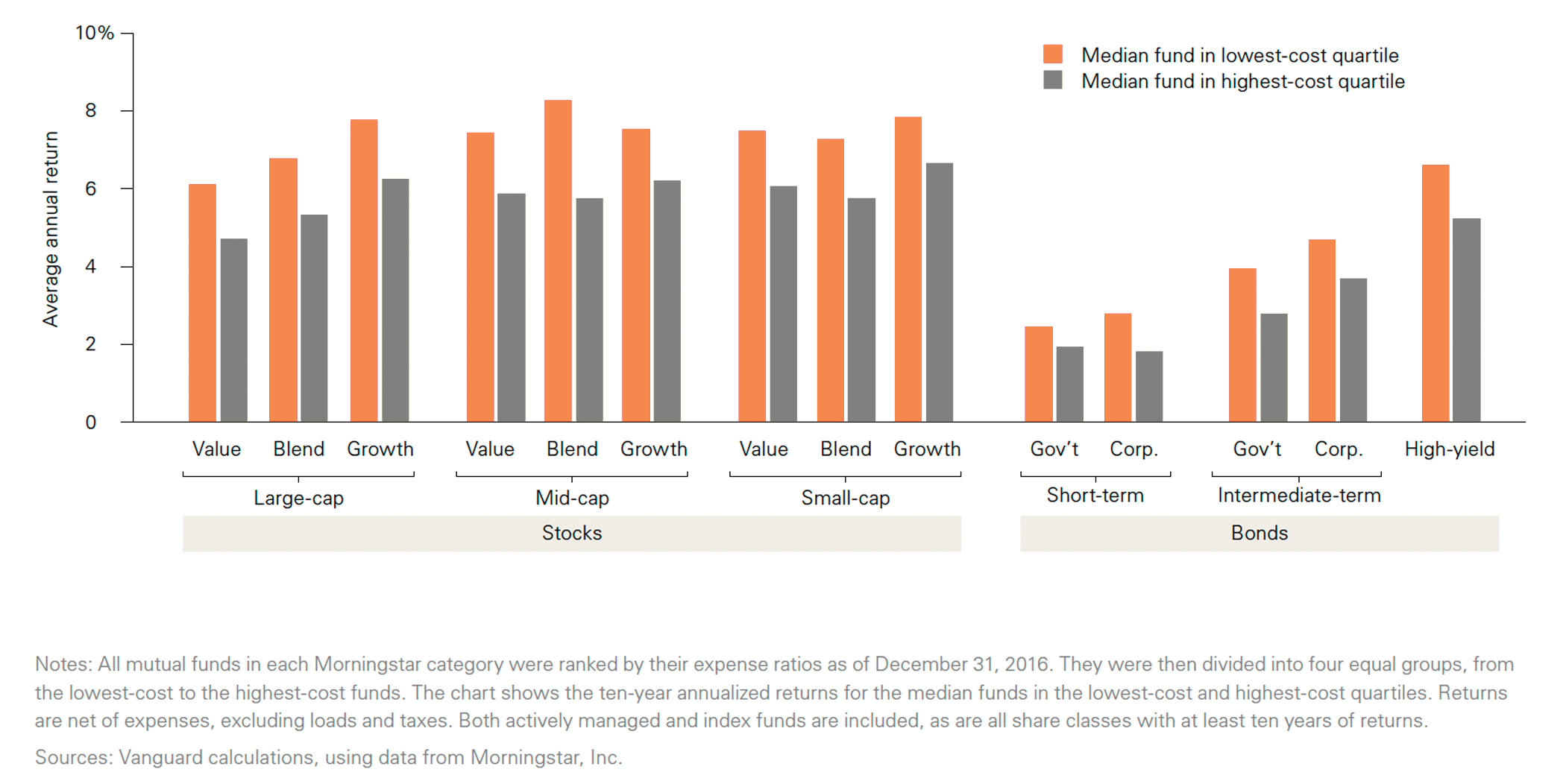
You can see that, on average, funds with lower costs outperformed funds with higher costs in all categories.
This outcome may seem counterintuitive in a world where we often associate higher cost with higher quality. But in an investment context it makes sense. Fees and expenses are a drag on performance. The more an investor pays in fees, the less they get to put into their own pocket.
Interestingly, lower fees, themselves, do not completely explain the performance advantage that low- cost funds have over high-cost funds. Whatever the reasons, managers of low-cost funds, on average, generate higher performance than managers of high-cost funds.
Controlling Portfolio Turnover Reduces Portfolio Expenses
Keeping an eye on expenses is important to long-term investment success. Mutual fund and ETF expense ratios are a big part of that, but expense ratios don’t include trading costs. Trading costs, like a fund’s expense ratio, are a drag on performance.
Every time a fund buys or sells a security it incurs trading costs. The more a fund buys and sells securities, the greater those costs. So, it’s important to track how frequently funds buy and sell the securities that they hold.
A fund’s “turnover rate” is the measure of how frequently it trades the securities that it holds. For example, a stock mutual fund with a 100% turnover rate, on average, trades all the stocks it holds once a year. A fund with a 25% turnover rate only trades about a quarter of its holdings in a year. Obviously, funds with higher turnover rates experience higher trading costs.
You might think trading costs have a small impact on the long-term value of a portfolio, but that is not the case. Experts like Vanguard Group founder, John Bogle, have estimated that a stock fund with a 100% turnover rate costs investors roughly 1% of their portfolio value each year.1
In the chart below, you can see the impact that this would have on a $1 million portfolio over the 25-years ending in 2018 compared to the return of the S&P 500 index.
Growth of $1M
25 Years
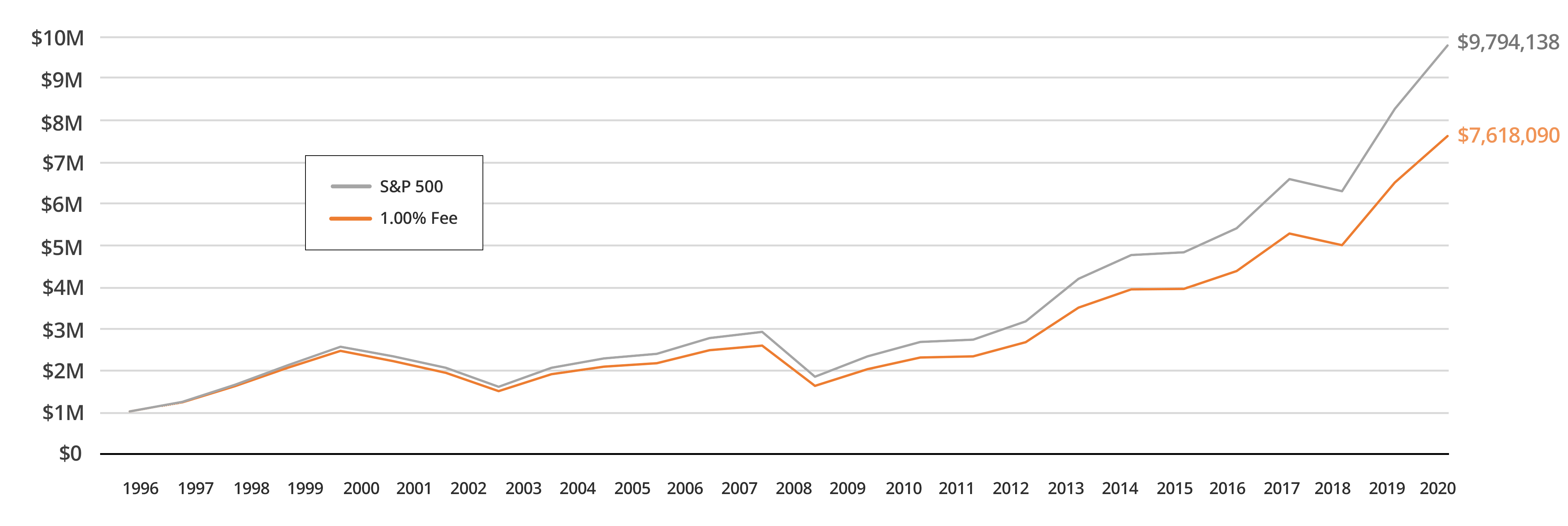
Source: Morningstar and First Ascent Asset Management
A 1% bite out of your portfolio’s returns costs $2,176,048 over 25 years. Turnover matters.
Higher trading costs are fine if they enhance fund performance after taking those costs into account. But the academic research on this topic suggests that, on average, higher turnover rates do not result in better fund performance.2 Therefore, it’s important to monitor the turnover rates of the funds within a portfolio and keep them low when possible.
Strategists Fees Also Impact Long-Term Performance
Individual mutual fund and ETF expenses clearly have an impact on long-term portfolio performance. Likewise, the fee that portfolio strategists charge to build portfolios using funds also has an impact.
Most strategists charge a fee based on a percentage of assets under management (AUM). A flat fee is another way that strategists charge for their management services. First Ascent Asset Management is the first strategist to charge a flat fee for portfolio management services. First Ascent’s current fee is 0.35% of assets annually, with a $1,400 cap per household.3
A low, flat fee provides significant advantages to long-term investors. You can see below the portfolio value of a $1 million account paying our $1,400 flat fee over 25 years vs. an account paying a more traditional .35% of AUM strategist fee. (The example assumes an annualized return of 7%.)
Effect of Fees on $1M Portfolio
25 Years
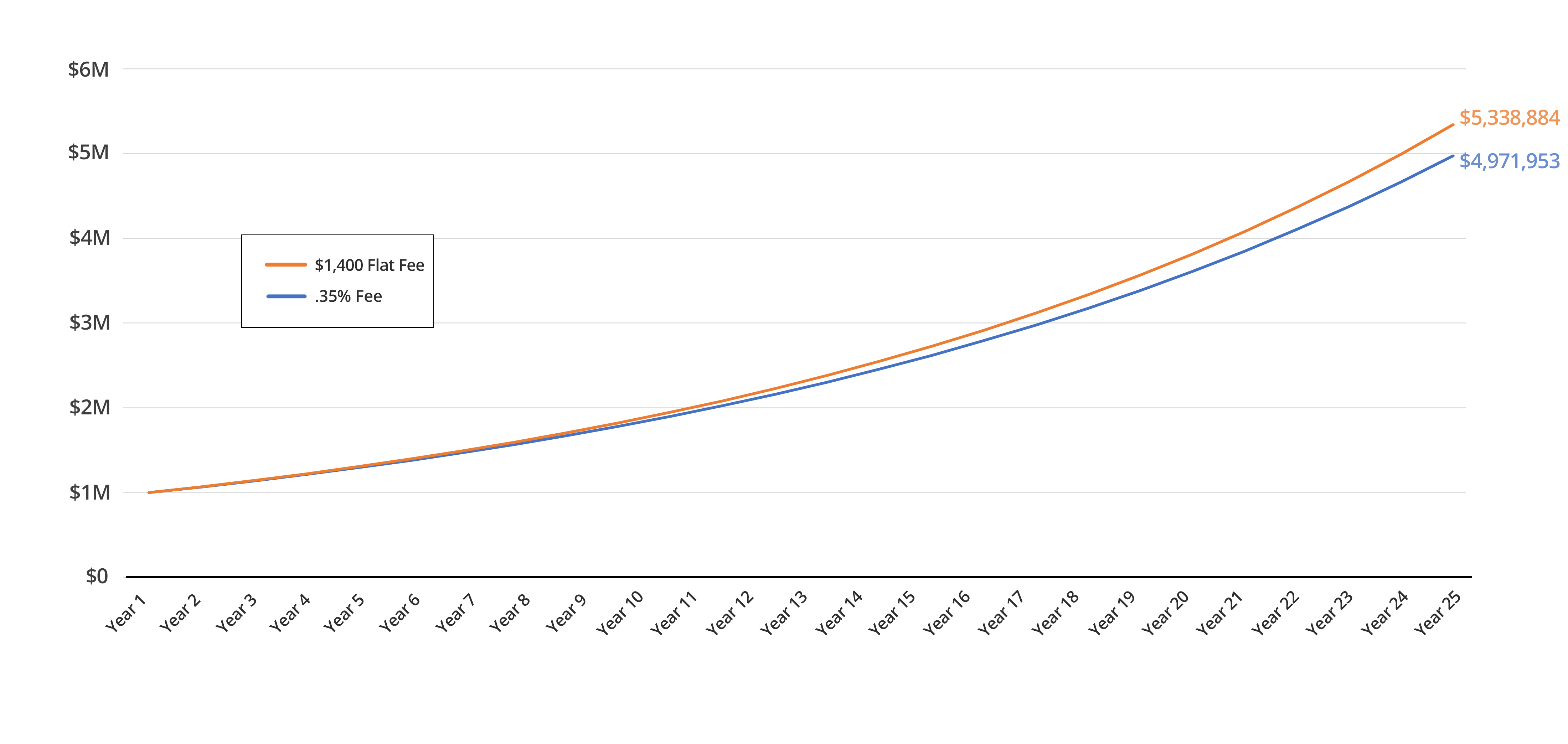
Source: First Ascent Asset Management.
The flat fee results in a benefit of $366,931 over the more traditional percentage of AUM strategist fee. The benefit is comprised of two elements: (1) the difference in the fees and (2) loss of growth on the assets that were paid in higher fees to the traditional strategist.
Over this time, the flat-fee strategist would have received fees of $35,000, while the traditional strategist charging a percentage of AUM fee would have received fees of $224,511—a difference of $189,511!
Of course, the benefits of working with a flat-fee strategist will vary depending upon the size of the account and the performance of the portfolio, but you can see that a focus on keeping fees low for clients can help investors keep more of what they earn.
1. Kiplinger.com, The Case for Low-Turnover Funds, (March 29, 2010)
2. Another Look at Portfolio Turnover and Mutual Fund Performance (Amadi & Amadi 2017)
3. Accounts under $400,000 are charged .35% of assets under management (AUM) and fees for accounts over $3 million may be negotiable.





